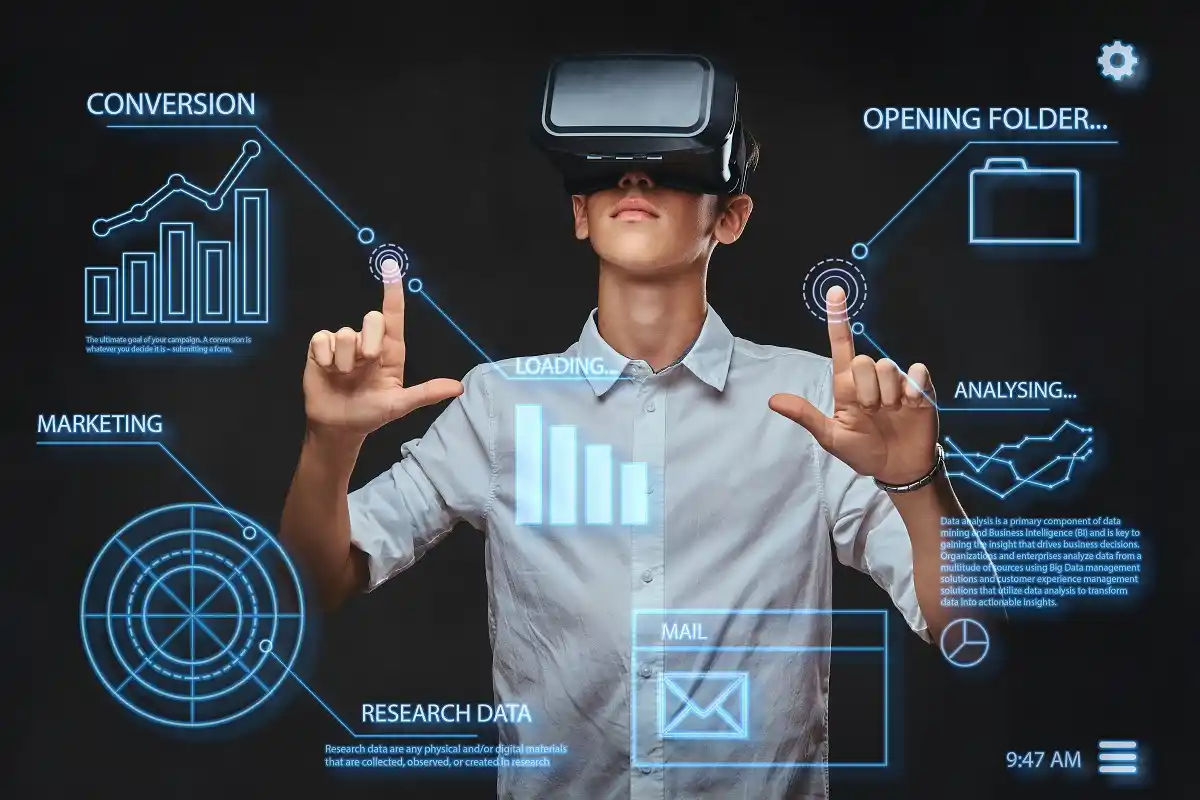The $200 billion advertising market is now undergoing rapid change. It’s critical for companies and marketers to keep current with emerging trends and technology. The sector is fast evolving because of the growth of digital advertising and emerging technologies like artificial intelligence, virtual reality, and augmented reality.
What will happen to advertising in the future is the obvious issue. Programmatic advertising, which automates the purchasing and selling of advertising space, is predicted to take over the market in 2023.
As organisations turn their attention to mobile-first strategies and the use of data and analytics to generate tailored campaigns, the advertising industry is evolving. The industry must take into account how consumer privacy is transforming the advertising sector as technology develops further.
For companies and marketers to stay ahead of the curve and make wise choices regarding their advertising tactics, they need to understand how technology is changing the sector. It might be challenging to accurately anticipate what the future of advertising will look like given the rapid development of new technology. But we can make educated estimates about what the future of advertising will look like if we understand the condition of the industry now and how technology is altering it.
To keep on top of things, foresee market trends, and seize new possibilities, it is essential to comprehend what the future of advertising holds.
The Impact of New Technologies
The effect of emerging technologies like artificial intelligence, virtual reality, blockchain, and automation is one of the largest developments we are now witnessing in the advertising sector. Businesses may now design more specialized and targeted advertising campaigns that can be quite effective at reaching their target consumers thanks to these technologies.
Additionally, customers will soon be able to immerse themselves in advertising thanks to the usage of cutting-edge technology like virtual and augmented reality.
How these technologies are changing the advertising industry?
The advertising sector is undergoing several changes as a result of these technologies. For instance, automation may speed up the ad buying process and AI can be used to customize advertising depending on a user’s browsing history. Blockchain may increase transparency and lower the risk of fraud in the digital advertising arena, and VR can be leveraged to create immersive brand experiences.
Implications for businesses
These technologies provide possibilities and difficulties for enterprises. On the one hand, they may assist businesses in more successfully and efficiently reaching clients. On the other side, they would need spending money on new equipment and personnel for firms, and there might be security and privacy problems. Before implementing these technologies, businesses should carefully assess the repercussions of doing so.
The Growth of Digital Advertising
The expansion of digital advertising is another trend we are observing in the advertising sector. Due to the growing use of digital devices like smartphones and laptops as well as the internet, digital advertising is increasingly the main way for companies to connect with their target customers.
As a result, this sector is experiencing a lot of innovation, with new ad forms and technology appearing often. Businesses may target particular customer demographics online, monitor how consumers respond to their ads, and instantly modify their campaigns. Programmatic advertising, which automates the purchasing and selling of advertising space, is predicted to take over the market in 2023.
How digital advertising is driving innovation in the industry?
By enabling new forms of advertising like programmatic advertising, which uses algorithms to automatically place ads on websites, and social media advertising, which enables companies to target customers based on their demographics and interests, digital advertising is fostering innovation in the industry.
Additionally, companies can assess the success of their campaigns and make better educated decisions about how to allocate their advertising budgets thanks to the usage of data and analytics in digital advertising.
The impact on traditional advertising methods?
The effect of digital advertising on traditional media, including print, radio, and television, is important since it has caused a reduction in the number of people who consume conventional media and a shift in advertising spending to digital channels. Additionally, there is pressure on conventional advertisers to change with the times and figure out how to combine conventional and digital advertising strategies.
The Role of Data and Analytics
Data and analytics are being utilised to build more successful and targeted advertising campaigns by allowing advertisers to gather and analyse customer data to gain insights into their behaviour and preferences. Businesses are leveraging data to create more effective and tailored advertising strategies, which can help them reach the proper audiences and get better outcomes.
Furthermore, data analytics may help firms measure the performance of their advertising efforts, allowing them to make data-driven judgements about where to devote their advertising budget and make smarter decisions about their advertising tactics. The consequences for the sector are that businesses that can effectively use data and analytics will have a competitive advantage over those that cannot.
Companies who can build targeted and tailored advertising experiences will have a higher conversion rate. Furthermore, being able to monitor and optimise the efficacy of advertising campaigns will allow firms to make better use of their advertising budget.
However, the use of data and analytics in advertising causes privacy issues among consumers. As businesses collect and analyse more data about their customers, the risk of personal information being shared or used without their consent grows. Consumers may also be uneasy with the level of personalisation that data-driven advertising may accomplish, leading to mistrust. To avoid customer and regulatory backlash, businesses must be honest about their data collecting and utilisation policies.
The Future of Ad Formats
The future of ad formats is exciting, as technology evolves and new opportunities for businesses to communicate with their audiences emerge. Ads will become more immersive with virtual and augmented reality, allowing buyers to step inside the brand experience. Consumers will find it easier to find the products and services they require thanks to interactive voice and visual search, while personalisation will become more complex and real-time.
Advertisers will be able to build dynamic, responsive adverts that adapt to the context and environment of the viewer. The future of ad formats will enable brands to engage with their customers in previously unthinkable ways, opening up new avenues for connection, innovation, and income growth.
Conclusion
The advertising industry is rapidly changing as a result of new technologies and shifting customer behaviours.
To remain competitive, businesses and marketers must stay on top of these developments. While it is impossible to predict exactly what the future of advertising will look like, we can make educated assumptions about what the future holds by understanding how technology is altering the industry. As technology advances, the sector must consider the impact on consumer privacy.
Overall, it’s an exciting time for the advertising industry, as new technology allows firms to connect with their customers in novel and creative ways.



